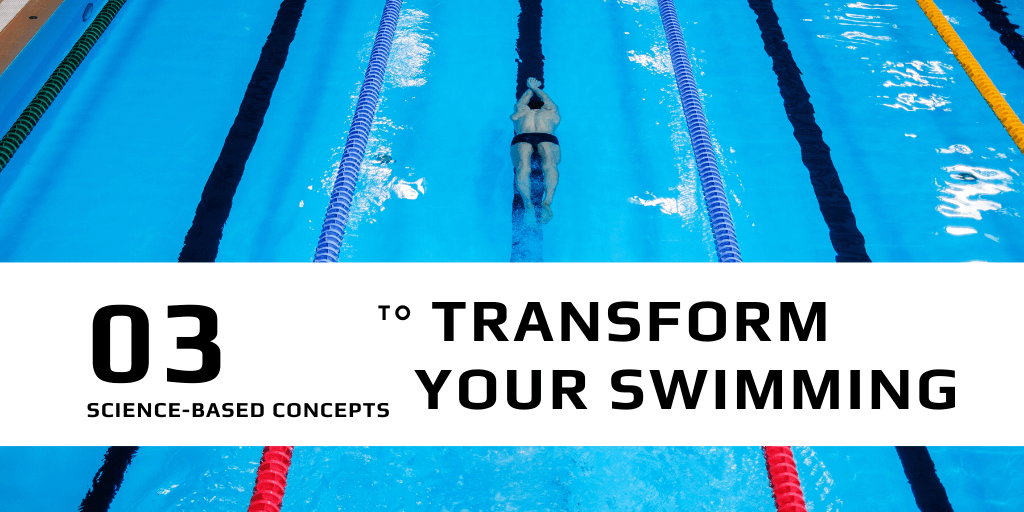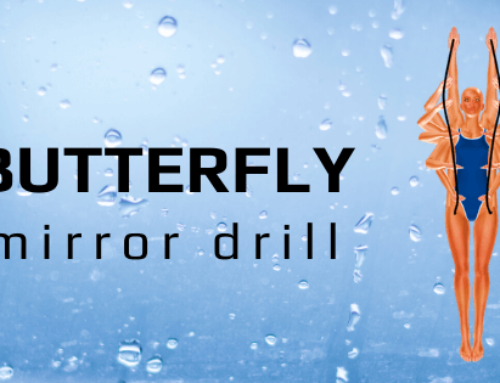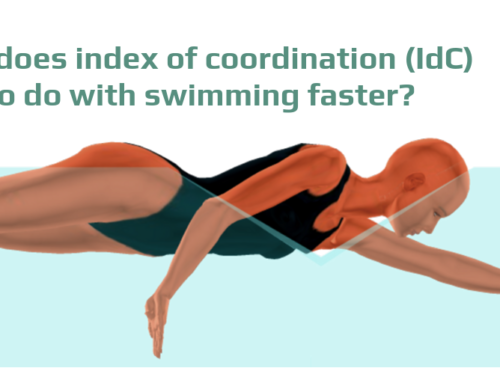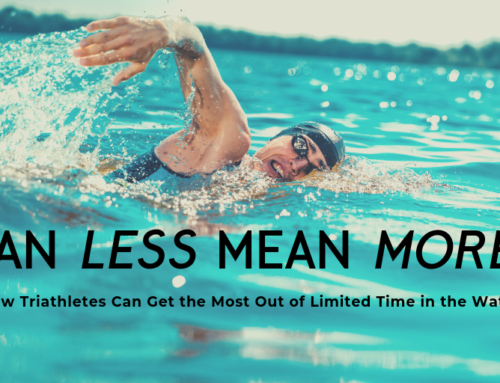Every swimmer wants to swim faster. (No surprise there!) But you may not know that EVERY swimmer – from beginner to Olympian – can improve their swimming by understanding three basic swimming principles based on science and using cues to help remember and follow them.
The three principles (presented in non-scientific language) and a few examples of the cues that can help you remember and use them to swim faster are explained below.
1. The shortest distance between two points is a straight line.1
Although swimming from one end of the pool to the other may actually be a straight line, it is still easy to grasp this concept. Undulation (the up and down motion of a swimmer’s head, body, and legs) increases the distance the swimmer is traveling from point to point. ANY vertical motion has an effect on a swimmer’s velocity. All of that excess motion not only slows velocity and but also increases the resistance (drag) of the water. In turn, this increased resistance requires more force to overcome. Effective (faster) technique requires a swimmer to minimize vertical motion of the head, body and legs in all four competitive strokes. This is especially obvious in breast and butterfly stroke.
One suggested cue that can help a swimmer minimize vertical movement in butterfly is to keep the water level at the top of head during a non-breathing stroke cycle.





2. A smaller surface area creates less resistance (drag) than a larger area.2
Many of us have had the experience of streamlining our bodies to ski or bike faster. It makes sense to reduce the surface area of any shape to reduce resistance against it. Obviously, a streamlined body would look and function more like a fish than a block! (Imagine pushing your hand parallel through water versus perpendicular to the flow.) Yet swimmers of all ability levels have not yet mastered an effective streamline – the most basic component of good technique and the foundation skill for fast swimming. To swim fast, you must reduce the surface area of your body as much as possible and maintain that position for as long and as often as appropriate.
A sample of cues for an optimal streamline position includes:
- The visual cue is to see the bottom of the pool directly beneath the head.
- The kinesthetic cues are to feel:
- one hand on top of the other
- fingertips pointing horizontally at the pool wall
- elbows locked
- upper arms squeezing the ears
- back arched
- legs straight
- feet together
- toes pointed
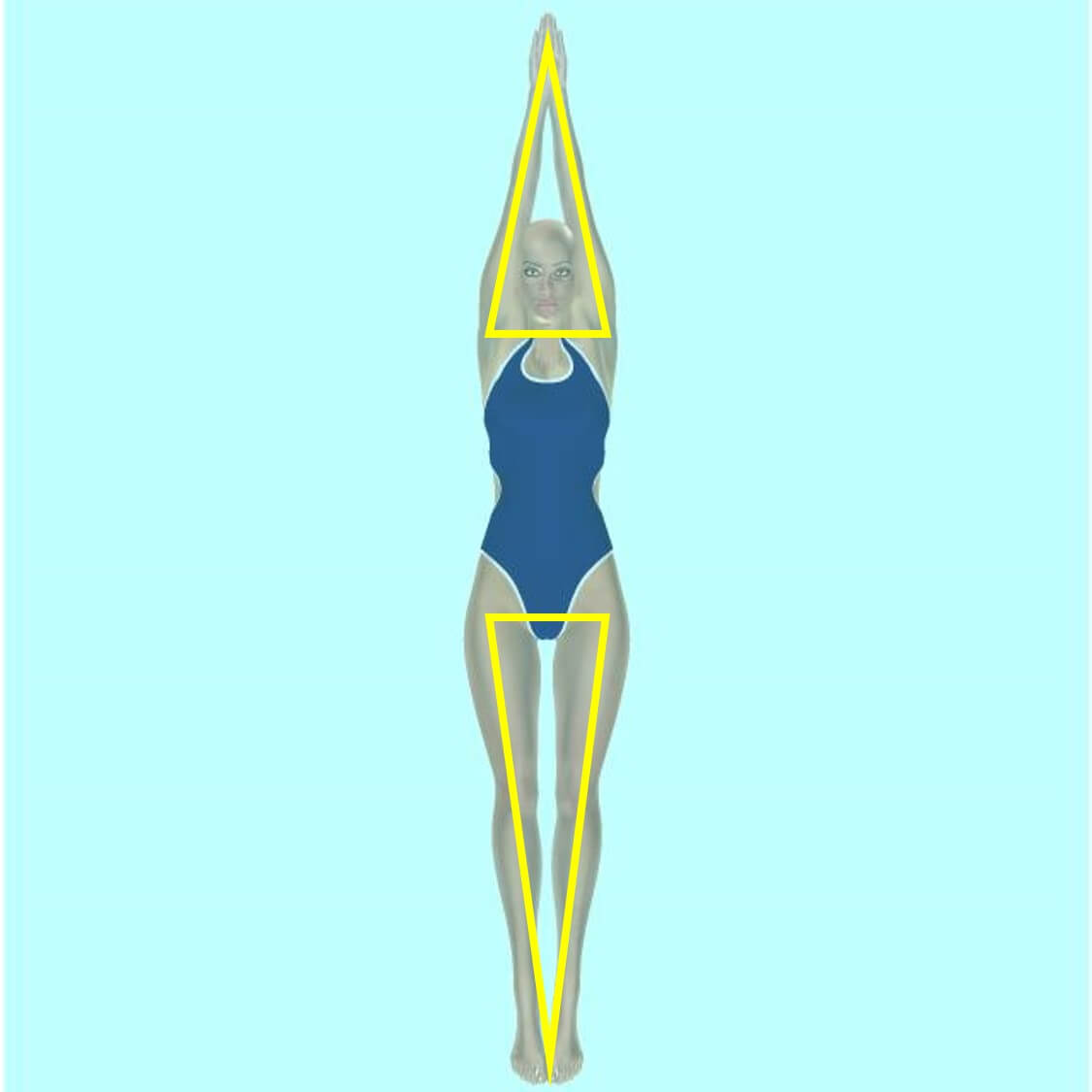
Streamline position minimizes drag
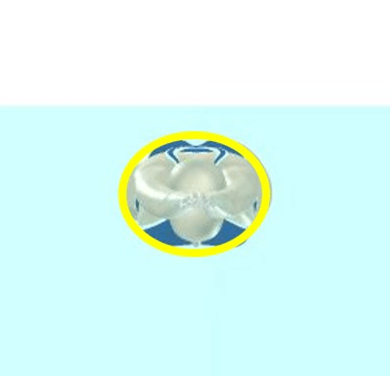
Streamline front view
3. Continuous propulsion requires continuous force.3
This concept can be illustrated in swimming using the term Index of Coordination or IdC. A negative IdC describes a freestyle technique in which the beginning of the pull in freestyle is delayed until the opposing arm is fully extended. This causes gaps in propulsion and negatively impacts velocity. Commonly referred to as “catch-up” stroke, this delay is less visible at race pace but will always have a negative impact on a swimmer’s time. When the IdC is positive, a freestyler begins the pull before the opposing arm completes the push. This causes an overlap of propulsive force. Effectively mastering a positive IdC may well have the single greatest effect on a swimmer’s times and has the potential to significantly drop swim times. Before trying to swim with a positive IdC, a swimmer must master a zero IdC and can transition to a positive IdC with an increase in stroke rate.

A sample of cues to help achieve a zero IdC includes:
Enter the arm with a downward angle so that at the completion of the entry the hand is below the shoulder.
- As the arm enters the water, angle downward so that the hand is the deepest part of the arm when the arm straightens.
- At the finish of the push phase, straighten the arm with the hand beneath the leg.
- See the entry arm straighten and feel the push arm straighten simultaneously.
The best thing about these three principles and corresponding cues is that the science behind each is so “eyeball obvious!” It is impossible to dispute a law of physics, but it is equally difficult to dismiss what you can see with your own eyes or measure using simple tools (like video cameras, stop watches or lap counters).
Don’t take my word for it. Get in the pool and give these cues a try.
To summarize:
- The shortest distance from one end of the pool to the other IS a straight line. ( 1Archimedes first articulated that the shortest path between two points in a plane is a straight line.)
- A streamlined body creates less drag. ( 2Drag depends on the properties of the fluid and on the size, shape, and speed of the object.)
- Catch-up stroke causes gaps in propulsion. ( 3A continuous source of propulsion produces the fastest swimming for the least cost in energy.)

